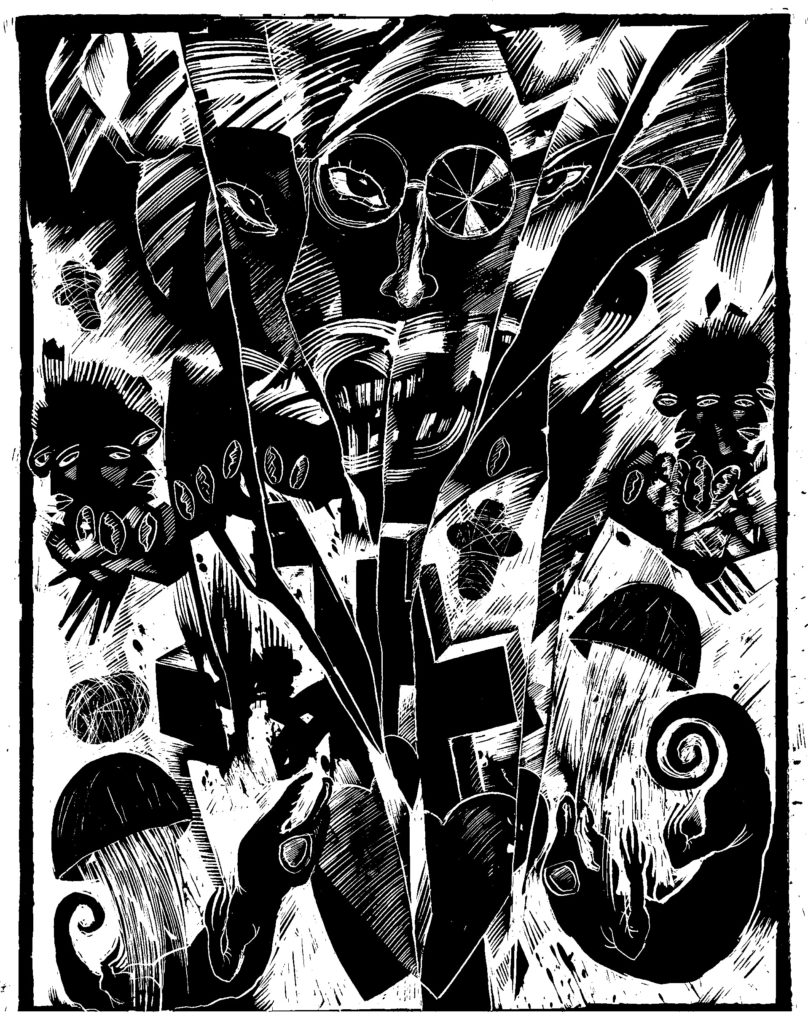Almost 500 years ago, an army made up of Spaniards and their allies laid siege to Tenochtitlan. The defense of that city is similar to other stories that narrate the dramatic days when a city is under siege: heroic and desperate acts, a lack of food and fresh water, and in the case of Tenochtitlan, the arrival of mass death from smallpox. The siege lasted for months, from May 26 to August 13, 1521.
I try to imagine the last gasps of its defense, house by house; the last efforts to avoid the establishment of the new order that put an end to the world as it was known in these lands. Political and governance structures were permanently altered, and not just that, the native population was decimated by wars, terrible epidemics and starvation. A different world was configured through what must have been lived as an apocalypse. The conquest of these lands didn’t just change the destiny of this side of the world, it changed the entire world.

The world as we know it today is organized by three systems: colonialism, patriarchy and capitalism, all of which were consolidated in the midst of this catastrophe. Capitalism needs the colonial order, colonialism wasn’t installed by a matriarchy. These systems are deeply imbricated. Racism, which orders and classifies bodies, is the son of colonialism, as machismo is of the patriarchy and classism of capitalism.
The complex, three headed system imposed by the colonial order was perfected with the establishment of nation states. The nation state is the structure that provided a legal framework for these systems. It is therefore not surprising that racism has been legalized and institutionalized, that when nations were born women were excluded from citizenship and voting rights, and that the state is the protector of capital.
The legal framework of the world’s democracies has given shelter to the patriarchy, to capitalism and to colonialism. If we look at reality this way, we can understand that seemingly disconnected phenomena came up from the same root of oppressive systems and subsystems within an overarching system.
We can’t speak of Indigenous people without also speaking of the struggles of people of African descent, the struggle for respect for the rights of migrants, or women’s struggles around the world. By way of example, the struggle of Indigenous peoples and the struggle for the rights of migrants have the state in common: it is the state that attacks the existence of Indigenous people and it is the borders of the state that become obstacles to the free movement of people.
The establishment of the colonial order, which is at once patriarchal and capitalist and which today is administered by the state, organized reality and created categories of oppression like “Indian.” The colonial order established the commerce of enslaved Africans and fuelled the accumulation of capital. To do all of this, keeping women oppressed was fundamental.
The consequences are visible. I write these lines in a moment in history when we are beginning to talk about and live the impacts of something that has been called “climate change.” The system made up of three ingredients is destroying the planet in short order. The siege of the world has begun. The prognosis is depressing and those who could do something to stop this process of death are hardly doing anything at all, and it appears that they never will.
In this context, the consequences of damage to the natural environment cause radical social and political impacts: new privileges are being created, those who are most vulnerable to environmental catastrophe will increasingly migrate en masse, in Indigenous territories we will suffer frontal attacks in order for capitalism to get what it needs to continue, and border control will become more intense, among other processes that are also intersected by gender.
The inevitability of the catastrophe that is facing humanity can be felt, as can the tension that announces the imminence of a terrible and complex series of events. Inequalities are surging within the framework of an environmental crisis of unprecedented size. All social struggles will need to adjust to a reality drawn by the ever growing impacts of climate change.
I suppose this tension that I sense is what the inhabitants of this side of the world felt 500 years ago, the imminence of an unspeakable catastrophe. Against all odds, Indigenous peoples continue to exist, even 500 years after apocalypse and death. How is that possible? Because in the midst of catastrophes, in a context of so much death, there is an articulation of resistance that centers life. It is from that coming catastrophe, from the tension that precedes it and from the articulation of resistances that I will be writing, because, against all odds, we are still here.
Author Bio:
Yasnaya Elena Aguilar Gil is a Mixe linguist from Ayutla, Oaxaca. Follow her on Twitter @Yasnayae. This column was originally published in El País and translated by Toward Freedom with the author’s permission.
